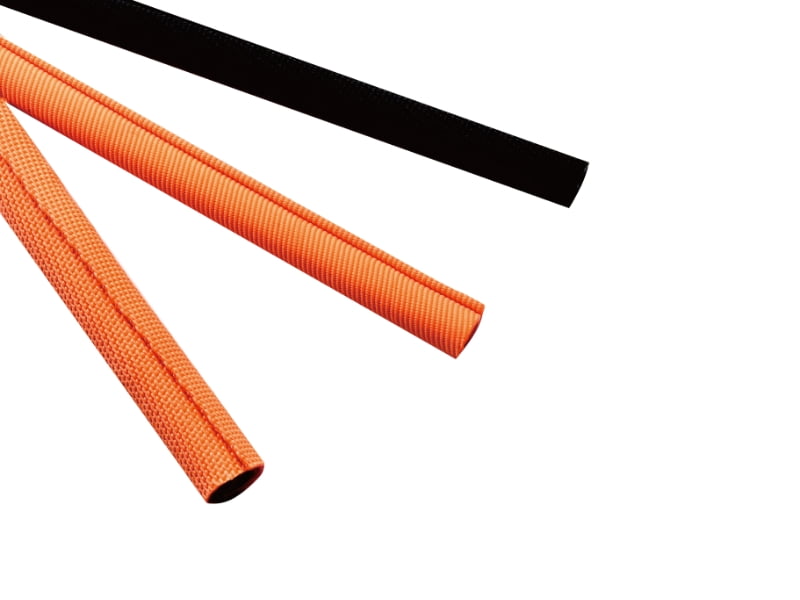Self-Closing Sleeving is a material widely used for cable protection and has won market recognition for its excellent abrasion resistance and protective properties. However, as environmental awareness increases, its environmental friendliness and recycling have become a focus of attention.

Environmental friendliness
1.Material Selection:Self-Closing Sleeving is usually made of polyester, nylon, polyurethane and other materials. Some of these materials have high durability and a long service life, which reduces the need for frequent replacement. However, the environmental properties of these materials vary depending on the manufacturing process and chemical treatment. In recent years, many manufacturers have begun to use more environmentally friendly materials, such as recycled polyester (rPET) and biodegradable materials, with the aim of reducing their environmental impact.
2. Manufacturing Processes:Self-Closing Sleeving's manufacturing processes, many companies are working to reduce waste and energy consumption. By utilizing more efficient production processes and equipment, dependence on natural resources is reduced, while lowering the carbon footprint of the manufacturing process.
3. Durability and Long Life:The durability of Self-Closing Sleeving means that it has a longer lifespan, which helps to reduce frequent replacement and waste generation. In the long term, less frequent replacement helps to reduce the negative impact on the environment.
Recycling
1. Recyclability of materials:The recyclability of the materials used in Self-Closing Sleeving is a key factor in evaluating its environmental friendliness. Polyester (e.g. PET) and nylon (e.g. PA) show some promise for recycling. Many Self-Closing Sleeves are designed with recycling in mind, allowing them to be more easily disposed of for recycling at the end of the product's life cycle.
2. Recycling Process:In order to effectively recycle Self-Closing Sleeving, it first needs to be sorted and separated. Many manufacturers and recycling organizations are establishing specialized recycling processes and facilities to handle these materials. By establishing a recycling network, recycling efficiency and reuse of materials can be improved.
3. Challenges and Solutions:Despite the potential for recycling, there are challenges to recycling Self-Closing Sleeving. For example, mixing and contamination of materials can complicate the recycling process. To address these challenges, many companies are working to develop materials that are easier to recycle and improve recycling technologies to increase recycling rates and reduce environmental impact.
The Environmental friendliness and recycling of Self-Closing Sleeving is a growing concern in the industry. Its negative environmental impact can be significantly reduced by choosing environmentally friendly materials, improving manufacturing processes, and advancing recycling technologies. Consumers and manufacturers alike should commit to adopting and supporting environmentally friendly Self-Closing Sleeving solutions for a more sustainable future.




 English
English

